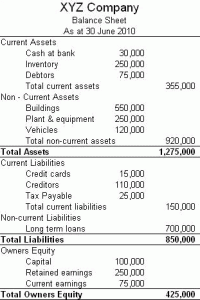A marina is a business. Let’s take a quote straight from my Marina Investment book draft.
There are many aspects of marinas that are uncommon to most forms of real estate yet common to businesses. The best indications of this are the income and expense line items and balance sheets shown on marina financial statements and accounting software printouts. These items include:
Income Statement Line Items
- Restaurant income
- Bar income (in conjunction with a restaurant)
- Lodging income
- Snack bar income
- Cost of goods sold
- Employees and payroll
- Employee benefit programs
- Health insurance
- Advertising
- Credit card discounts
- Various types of equipment rentals
- Telephone
- Travel and entertainment
- Fuel dispensing
Balance Sheet Line Items
- Multiple business vehicles
- Repair parts inventory
- New boat dealership inventory
- Used boat dealership inventory
- Ship’s store inventory
If there were no business, why would there be a balance sheet? That one really hits home doesn’t it? If that isn’t enough, let’s look at job descriptions, a sure sign that a business is operating on the premises.
Job Descriptions
- Dockmaster
- Marina manager
- Sales manager
- New and used boat salespeople
- Parts manager
- Boat repair manager
- Boat repair mechanics or technicians
- Restaurant manager
- Restaurant servers
- Restaurant cooks or chefs
 OK, so I’ve not only driven the nail home but I’ve put it clean through the board. ‘Guess I used the wrong tool.
OK, so I’ve not only driven the nail home but I’ve put it clean through the board. ‘Guess I used the wrong tool.
How does the cost approach consider the contribution of business toward market value? It doesn’t. ‘Pure and simple. The cost to “construct” the real estate has nothing to do with the cost to start and run the business. The real estate has no employees. The business does.
Now here’s a tire kicker for you. If you’re doing a cost approach and, say, an income approach, you should not be able to reconcile them. The values should be different. One represents real estate and the other real estate plus business (which we appraisers refer to as business enterprise value). The value of the real estate via the cost approach represents a subset of the value via the income approach. Think of it this way. The real estate is a subset of the entire marina operation. Sure the vast majority of value for a marina is in the real estate, but it doesn’t change this relationship. The same can be said about the cost approach compared to the sales comparison approach. I’ve yet to see this mentioned in any marina appraisal I’ve reviewed.
Did you also pick up one other key relationship in the above… that the cost approach should always be less than the sales comparison and income approaches? Surely a subset is less than the whole, right? Yet I have seen too many cost approaches done for marinas where the value is higher than either or both of these approaches. I just can’t accept that the market value of the business is negative because the sales comparison and/or income approaches are less than the cost approach (if it were, the business should be shut down or new management is a necessity).
Conclusion
So I’ll bet after reading these four parts you’re of the impression that I’ll never do another marina cost approach because I’ve shot myself in the foot. The funny thing is it’s not true. If I’m required to do one, I’ll do it and reference these blogs as source material to explain why I’m not putting any weight on this approach. Elements of the cost approach are useful for separating business and real estate from the larger business enterprise value but that’s about it.
Now if only assessors would stop using the cost approach for marina assessments, my world would be complete. But then again, I’d have a whole lot less fun in court.

